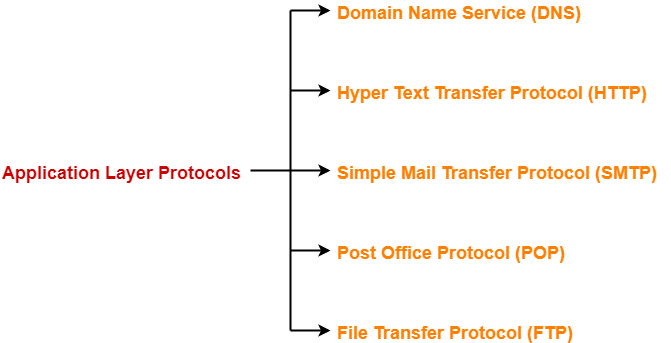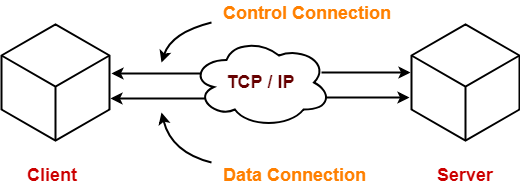Application Layer Protocols-
Important application layer protocols are-

- Domain Name Service (DNS)
- Hyper Text Transfer Protocol (HTTP)
- Simple Mail Transfer Protocol (SMTP)
- Post Office Protocol (POP)
- File Transfer Protocol (FTP)
In this article, we will discuss about File Transfer Protocol (FTP).
File Transfer Protocol-
- FTP is short for File Transfer Protocol.
- It is an application layer protocol.
Purpose-
- It is used for exchanging files over the internet.
- It enables the users to upload and download the files from the internet.
Working-
FTP establishes two TCP connections between the client and the server.
- One connection is used for transferring data.
- Other connection is used for transferring control information.

Characteristics of FTP-
- FTP uses TCP at the transport layer.
- FTP uses port number 21 for control connection.
- FTP uses port number 20 for data connection.
- FTP uses persistent TCP connections for control connection.
- FTP uses non-persistent connections for data connection.
- FTP is a connection oriented protocol.
- FTP is an out-of-band protocol as data and control information flow over different connections.
- SMTP is a stateful protocol.
Important Notes-
Note-01:
| Emails can’t be sent using FTP. |
This is because-
- FTP requires the connection establishment between the client and server before transferring the files.
- So, both have to be online at the same time.
- That is why, emails are not sent using FTP.
Note-02:
| FTP can transfer one file at a time. |
- FTP is used for transferring one file at a time in either direction between the client and the server.
Note-03:
| FTP is a stateful protocol. |
This is because-
- The client establishes control connection for the duration of an FTP session.
- It typically spans multiple data transfers.
- So, FTP is a stateful protocol.
To gain better understanding about File Transfer Protocol,
Next Article- Comparison of Application Layer Protocols
Get more notes and other study material of Computer Networks.
Watch video lectures by visiting our YouTube channel LearnVidFun.